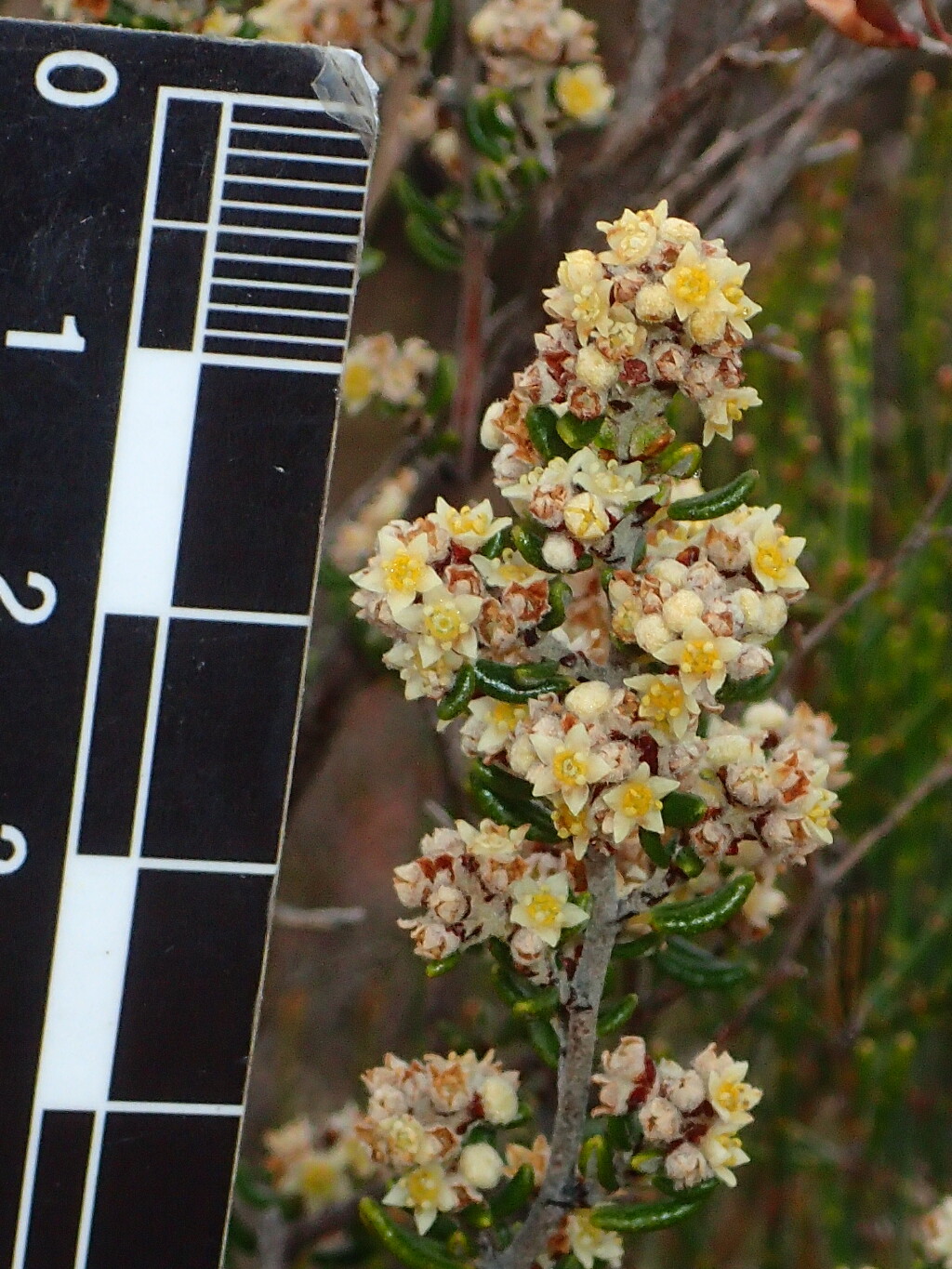Spyridium subochreatum
(F.Muell.) ReissekStraggling or erect shrub to c. 60(–150) cm high; branchlets densely stellate-tomentose. Leaves all similar, shortly petiolate, oblong or narrowly ovate to narrowly obovate, 5–15 mm long, 1–4 mm wide, obtuse, margins recurved to revolute but undersurface usually partly exposed, upper surface, at least of young leaves, with dense to scattered fine stellate hairs, lower surface densely white-pubescent; stipules dark brown, 2–3 mm long, more or less glabrous, united for up to two-thirds their length. Flowers in dense clusters that are crowded toward branch-tips (rarely in sessile, terminal heads), each cluster surrounded by several broad, dark brown papery bracts; perianth 2–3 mm long, cream, externally white-pubescent; sepals c. 1 mm long; free part of hypanthium c. 0.1 mm long; style c. 0.5 mm long. Fruit c. 2.5 mm long. Flowers Aug.–Nov.
LoM, MuM, Wim, RobP. Almost ubiquitous on dune-mallee and mallee-heath associations in the north-west of the State, occasionally also in scrubs on sandstone rises.
The ill-defined varieties are no longer recognised in Spyridium subochreatum.
Walsh, N.G. (1999). Spyridium. In: Walsh, N.G.; Entwisle, T.J., Flora of Victoria Vol. 4, Cornaceae to Asteraceae, pp. 115–120. Inkata Press, Melbourne.
 Spinning
Spinning

